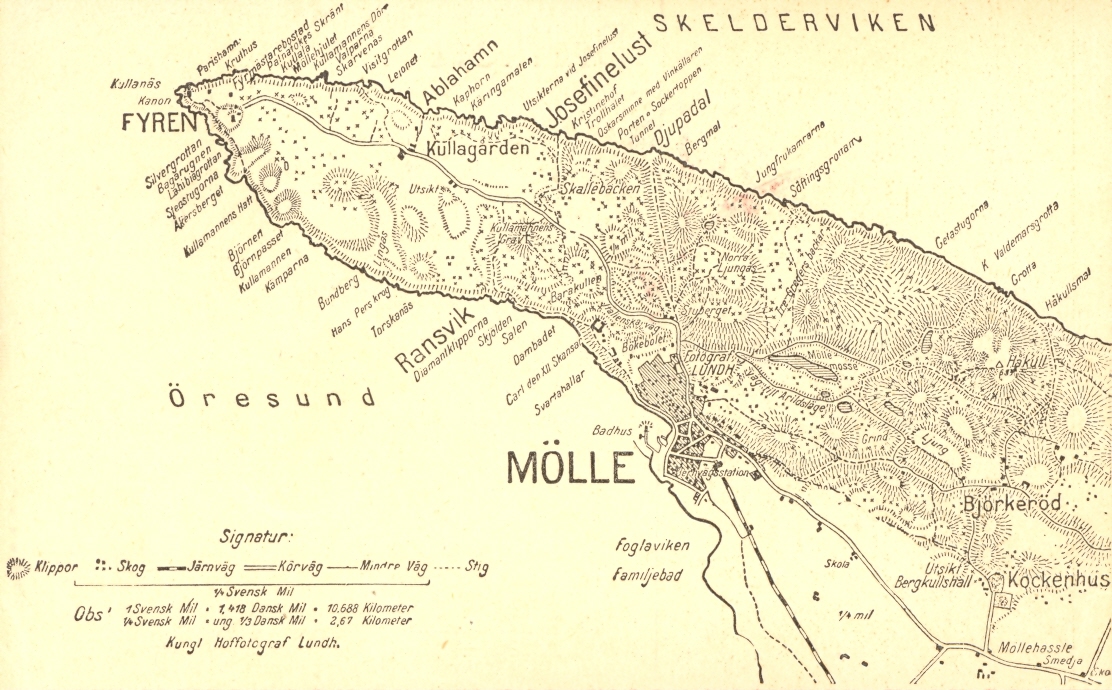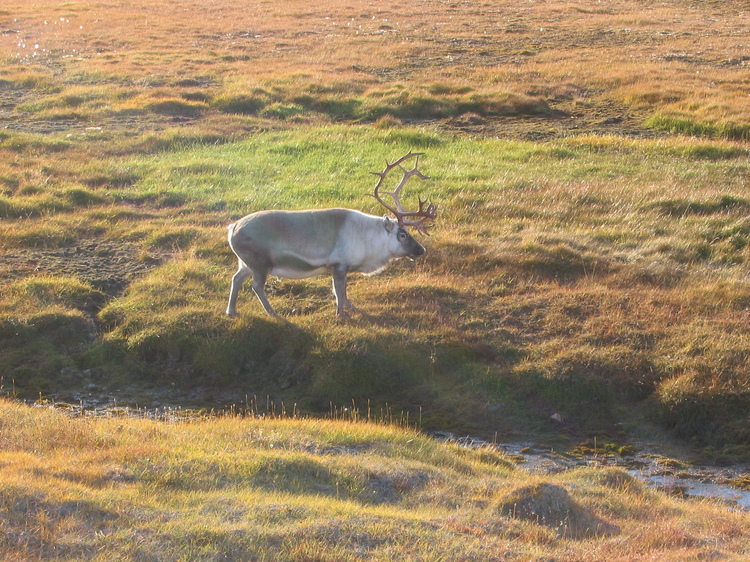|
Kullaberg Nature Reserve
Kullaberg () is a peninsula and nature reserve of land protruding into the Kattegat in Höganäs Municipality near the town of Mölle in southwest Sweden. The site in the province of Skåne is an area of considerable biodiversity supporting a number of rare species and has been designated as an Important Bird Area (IBA) in Sweden as well as a Special Protection Area (SPA). The terrain is dominated by steep cliffs rising from the sea and rocky outcrops on the ridge above, the highest elevation being Håkull at 188 metres. Ridgetop vegetation includes a mixed hardwood broadleaf forest consisting of birch, beech, oak and pine trees with an understory of hawthorn, juniper, wild honeysuckle and blackthorn. Among the notable rare plants are spring vetchling, ''Lathyrus sphaericus''. Inhabited as early as the Stone Age, there are extant stone circles, grave mounds, ancient village remains and other archeological features. Kullaberg is administered by the Höganäs Forestry Board and ... [...More Info...] [...Related Items...] OR: [Wikipedia] [Google] [Baidu] |
Hardwood
Hardwood is wood from dicot trees. These are usually found in broad-leaved temperate and tropical forests. In temperate and boreal latitudes they are mostly deciduous, but in tropics and subtropics mostly evergreen. Hardwood (which comes from angiosperm trees) contrasts with softwood (which is from gymnosperm trees). Characteristics Hardwoods are produced by angiosperm trees that reproduce by flowers, and have broad leaves. Many species are deciduous. Those of temperate regions lose their leaves every autumn as temperatures fall and are dormant in the winter, but those of tropical regions may shed their leaves in response to seasonal or sporadic periods of drought. Hardwood from deciduous species, such as oak, normally shows annual growth rings, but these may be absent in some tropical hardwoods. Hardwoods have a more complex structure than softwoods and are often much slower growing as a result. The dominant feature separating "hardwoods" from softwoods is the presence o ... [...More Info...] [...Related Items...] OR: [Wikipedia] [Google] [Baidu] |
Village
A village is a clustered human settlement or community, larger than a hamlet but smaller than a town (although the word is often used to describe both hamlets and smaller towns), with a population typically ranging from a few hundred to a few thousand. Though villages are often located in rural areas, the term urban village is also applied to certain urban neighborhoods. Villages are normally permanent, with fixed dwellings; however, transient villages can occur. Further, the dwellings of a village are fairly close to one another, not scattered broadly over the landscape, as a dispersed settlement. In the past, villages were a usual form of community for societies that practice subsistence agriculture, and also for some non-agricultural societies. In Great Britain, a hamlet earned the right to be called a village when it built a church. [...More Info...] [...Related Items...] OR: [Wikipedia] [Google] [Baidu] |
Grave Mound
A tumulus (plural tumuli) is a mound of earth and stones raised over a grave or graves. Tumuli are also known as barrows, burial mounds or ''kurgans'', and may be found throughout much of the world. A cairn, which is a mound of stones built for various purposes, may also originally have been a tumulus. Tumuli are often categorised according to their external apparent shape. In this respect, a long barrow is a long tumulus, usually constructed on top of several burials, such as passage graves. A round barrow is a round tumulus, also commonly constructed on top of burials. The internal structure and architecture of both long and round barrows has a broad range; the categorization only refers to the external apparent shape. The method of may involve a dolmen, a cist, a mortuary enclosure, a mortuary house, or a chamber tomb. Examples of barrows include Duggleby Howe and Maeshowe. Etymology The word ''tumulus'' is Latin for 'mound' or 'small hill', which is derived from t ... [...More Info...] [...Related Items...] OR: [Wikipedia] [Google] [Baidu] |
Stone Circle (Iron Age)
The stone circles of the Iron Age (c. 500 BC – c. 400 AD) were a characteristic burial custom of southern Scandinavia and Southwestern Finland, especially on Gotland and in Götaland Finland court stones are found in Eura, Ulvila and Kokemäki. They date typically during the Pre-Roman Iron Age and the Roman Iron Age. In Sweden, they are called Domarringar (judge circles), Domkretsar (judge circles) or Domarsäten (judge seats). In Finland they are called Käräjäkivet (court stones). In some places in Nordic countries they were used until 17th century They should not be confused with the Stone circles of the Bronze Age and Britain. History A tradition of making stone circles existed on the European continent in Wielbark culture near the mouth of the Vistula River in the first century. The practice suggests Norse influence but may have been established in the area before the arrival of the Goths. The stone circles were sometimes used as burial grounds. Shapes Th ... [...More Info...] [...Related Items...] OR: [Wikipedia] [Google] [Baidu] |
Nordic Stone Age
The Nordic Stone Age refers to the Stone Age of Scandinavia. During the Weichselian glaciation (115,000 – 11,700 years ago), almost all of Scandinavia was buried beneath a thick permanent ice cover, thus, the Stone Age came rather late to this region. As the climate slowly warmed up by the end of the ice age, nomadic hunters from central Europe sporadically visited the region. However, it was not until around 12,000 BCE that permanent, but nomadic, habitation in the region took root. Late Upper Paleolithic As the ice receded, reindeer grazed the emerging tundra plains of Denmark and southernmost Sweden. This was the era of the Hamburg culture, tribes who hunted in vast territories that spanned over 100,000 km2, and lived as nomads in teepees, following the reindeer seasonal migrations across the barren tundra. On this land, there was little plant cover, except for occasional arctic white birch and rowan. Slowly a taiga forest appeared. Around 11,400 BCE, the Bromm ... [...More Info...] [...Related Items...] OR: [Wikipedia] [Google] [Baidu] |
Spring Vetchling
''Lathyrus vernus'', the spring vetchling, spring pea, or spring vetch, is a species of flowering herbaceous perennial plant in the genus ''Lathyrus'', native to forests of Europe and Siberia. It forms a dense clump of pointed leaves with purple flowers in spring, shading to a greenish-blue with age. This species, and the cultivar 'Alboroseus', have gained the Royal Horticultural Society's Award of Garden Merit. Description ''Lathyrus vernus'' is a perennial plant with an upright stem without wings. The stem grows to and is erect and nearly hairless. The leaves are alternate with short stalks and large, wide stipules. The leaf blades are pinnate with two to four pairs of ovate tapering leaflets with blunt tips, entire margins and no tendrils. The inflorescence has a long stem and three to ten purplish-red flowers, each long, turning bluer as they age. These have five sepals and five petals and are irregular. The uppermost petal is known as the "standard", the lateral two as ... [...More Info...] [...Related Items...] OR: [Wikipedia] [Google] [Baidu] |
Blackthorn
''Prunus spinosa'', called blackthorn or sloe, is a species of flowering plant in the rose family Rosaceae. The species is native to Europe, western Asia, and regionally in northwest Africa. It is locally naturalized in New Zealand, Tasmania, and the Pacific Northwest and New England regions of the United States. The fruits are used to make sloe gin in Britain and patxaran in Spain. The wood is used to make walking sticks, including the Irish shillelagh. Description ''Prunus spinosa'' is a large deciduous shrub or small tree growing to tall, with blackish bark and dense, stiff, spiny branches. The leaves are oval, long and broad, with a serrated margin. The flowers are about in diameter, with five creamy-white petals; they are produced shortly before the leaves in early spring, and are hermaphroditic, and insect-pollinated. The fruit, called a "sloe", is a drupe in diameter, black with a purple-blue waxy bloom, ripening in autumn and traditionally harvested – at l ... [...More Info...] [...Related Items...] OR: [Wikipedia] [Google] [Baidu] |
Honeysuckle
Honeysuckles are arching shrubs or twining vines in the genus ''Lonicera'' () of the family Caprifoliaceae, native to northern latitudes in North America and Eurasia. Approximately 180 species of honeysuckle have been identified in both continents. Widely known species include ''Lonicera periclymenum'' (common honeysuckle or woodbine), ''Lonicera japonica'' (Japanese honeysuckle, white honeysuckle, or Chinese honeysuckle) and ''Lonicera sempervirens'' (coral honeysuckle, trumpet honeysuckle, or woodbine honeysuckle). ''L. japonica'' is an aggressive, highly invasive species considered a significant pest on the continents of North America, Europe, South America, Australia, and Africa. Some species are highly fragrant and colorful, so are cultivated as ornamental garden plants. In North America, hummingbirds are attracted to the flowers, especially ''L. sempervirens'' and ''L. ciliosa'' (orange honeysuckle). Honeysuckle derives its name from the edible sweet nectar obtainable fro ... [...More Info...] [...Related Items...] OR: [Wikipedia] [Google] [Baidu] |
Juniper
Junipers are coniferous trees and shrubs in the genus ''Juniperus'' () of the cypress family Cupressaceae. Depending on the taxonomy, between 50 and 67 species of junipers are widely distributed throughout the Northern Hemisphere, from the Arctic, south to tropical Africa, throughout parts of West Asia, western, Central Asia, central and South Asia, southern Asia, east to eastern Tibet in the Old World, and in the mountains of Central America. The highest-known juniper forest occurs at an altitude of in southeastern Tibet and the northern Himalayas, creating one of the highest tree lines on earth. Description Junipers vary in size and shape from tall trees, tall, to columnar or low-spreading shrubs with long, trailing branches. They are evergreen with needle-like and/or scale-like leaves. They can be either monoecious or dioecious. The female Conifer cone, seed cones are very distinctive, with fleshy, fruit-like coalescing scales which fuse together to form Juniper berry, a&n ... [...More Info...] [...Related Items...] OR: [Wikipedia] [Google] [Baidu] |
Crataegus
''Crataegus'' (), commonly called hawthorn, quickthorn, thornapple, Voss, E. G. 1985. ''Michigan Flora: A guide to the identification and occurrence of the native and naturalized seed-plants of the state. Part II: Dicots (Saururaceae–Cornaceae)''. Cranbrook Institute of Science and University of Michigan Herbarium, Ann Arbor, Michigan. May-tree,Graves, Robert. ''The White Goddess: A Historical Grammar of Poetic Myth'', 1948, amended and enlarged 1966, New York: Farrar, Straus and Giroux. whitethorn, Mayflower, or hawberry, is a genus of several hundred species of shrubs and trees in the family Rosaceae, native to temperate regions of the Northern Hemisphere in Europe, Asia, North Africa, and North America. The name "hawthorn" was originally applied to the species native to northern Europe, especially the common hawthorn ''C. monogyna'', and the unmodified name is often so used in Britain and Ireland. The name is now also applied to the entire genus and to the related Asian ... [...More Info...] [...Related Items...] OR: [Wikipedia] [Google] [Baidu] |
Pine
A pine is any conifer tree or shrub in the genus ''Pinus'' () of the family Pinaceae. ''Pinus'' is the sole genus in the subfamily Pinoideae. The World Flora Online created by the Royal Botanic Gardens, Kew and Missouri Botanical Garden accepts 187 species names of pines as current, together with more synonyms. The American Conifer Society (ACS) and the Royal Horticultural Society accept 121 species. Pines are commonly found in the Northern Hemisphere. ''Pine'' may also refer to the lumber derived from pine trees; it is one of the more extensively used types of lumber. The pine family is the largest conifer family and there are currently 818 named cultivars (or trinomials) recognized by the ACS. Description Pine trees are evergreen, coniferous resinous trees (or, rarely, shrubs) growing tall, with the majority of species reaching tall. The smallest are Siberian dwarf pine and Potosi pinyon, and the tallest is an tall ponderosa pine located in southern Oregon's Rogue Riv ... [...More Info...] [...Related Items...] OR: [Wikipedia] [Google] [Baidu] |







